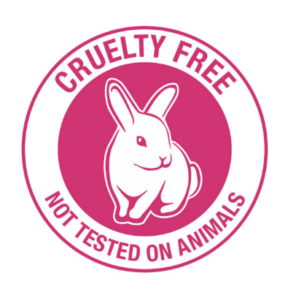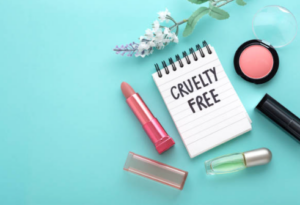Consumer Demands and Corporate Challenges

In the ever-evolving landscape of beauty, the term “cruelty-free” has become more than just a buzzword – it’s a conscientious choice driven by ethical considerations. As consumers increasingly demand transparency and compassionate practices, the spotlight is on big beauty brands to assess whether they can genuinely commit to cruelty-free principles. In this blog, we embark on a comprehensive exploration of the challenges, motivations, and the evolving landscape surrounding the efforts of large corporations to embrace cruelty-free beauty.
I. The Definition of Cruelty-Free
In exploring the intricacies of big beauty brands adopting cruelty-free practices, it is imperative to thoroughly dissect what it means for a product or brand to be deemed cruelty-free. Traditionally associated with refraining from animal testing, this commitment extends beyond a mere absence of testing, encompassing a spectrum of ethical considerations.
1. Animal Testing Exclusions:
- The term “cruelty-free” initially centered around the avoidance of animal testing, both in the final product and during the formulation process.
- Understanding the specifics of this exclusion is crucial, as it involves not only the finished product but also the individual ingredients that make up the formulation.
2. Ethical Ingredient Sourcing:
- A holistic approach to cruelty-free standards involves scrutinizing every ingredient for its ethical sourcing. This means ensuring that no animal-related harm occurs during the extraction or production of raw materials.
- Big beauty brands are increasingly under pressure to trace the origin of each component, promoting fair trade practices and environmentally sustainable sourcing.
3. Environmental Responsibility:
- Beyond the treatment of animals, cruelty-free practices now extend to environmental considerations. This involves minimizing the ecological footprint of production, using sustainable packaging, and adopting eco-friendly manufacturing processes.
- Big beauty brands are scrutinized not only for their treatment of animals but also for their broader impact on the planet, aligning with a growing consumer demand for environmentally conscious products.
4. Commitment to Transparency:
- The true essence of cruelty-free beauty involves transparency throughout the entire production cycle. Consumers are seeking not just a label but a detailed understanding of a brand’s ethical journey.
- Brands are now expected to provide transparent communication about their sourcing practices, manufacturing processes, and any challenges faced in adhering to cruelty-free principles.
5. Nuances in Testing Policies:
- Some brands may claim to be cruelty-free but might contract third parties to conduct animal testing on their behalf. It’s essential to explore the nuances of a brand’s testing policies to ensure a comprehensive commitment to cruelty-free practices.
- Understanding the complexities of testing, including instances where regulatory bodies may require certain tests, provides a more nuanced perspective on a brand’s dedication to cruelty-free standards.
Consumer activism is a dynamic force propelling big beauty brands toward cruelty-free practices. As information becomes more accessible, consumers are educated about the ethical implications of their choices. Social media acts as a powerful tool, allowing consumers to voice concerns and demand accountability. This wave of activism forces corporations to reevaluate their values, aligning them with the evolving ethical consciousness of their customer base.

II. Regulatory Frameworks and Bans on Animal Testing
Understanding the commitment of big beauty brands to cruelty-free practices, the global regulatory landscape plays a pivotal role. The presence of regulatory frameworks and bans on animal testing varies across regions, shaping the ethical stance of these corporations.
1. European Union:
- The European Union (EU) has been a trailblazer in the movement against animal testing. Since 2013, a comprehensive ban on the sale of cosmetic products tested on animals has been in place.
- This ban extends not only to finished products but also to the testing of individual cosmetic ingredients. Big beauty brands operating in the EU market are compelled to adhere to these stringent standards.
2. Israel, India, New Zealand, and Other Regions:
- Beyond the EU, several other regions, including Israel, India, and New Zealand, have implemented outright bans on animal testing for cosmetic products.
- The diversity of these regulatory landscapes presents a challenge for global beauty brands, as they must navigate and comply with varying standards when operating in multiple markets.
3. Evolving Legislation:
- Legislative changes and updates continually shape the global approach to cruelty-free beauty. Constantly evolving laws, such as those restricting animal testing for cosmetics in California, contribute to a dynamic regulatory environment.
- Big beauty brands need to stay abreast of these changes to adjust their strategies and ensure compliance across different jurisdictions.
4. Global Market Challenges:
- While bans on animal testing align with ethical consumer demands, they pose challenges for big beauty brands operating in a global market. Navigating diverse regulatory requirements necessitates a strategic and flexible approach.
- The challenge is not only in meeting current standards but also in anticipating and adapting to potential changes in legislation across various regions.
5. Collaboration with Regulatory Bodies:
- Big beauty brands often collaborate with regulatory bodies to influence and shape industry standards. Active involvement in discussions about alternative testing methods and contributing to the establishment of global cruelty-free norms showcases a commitment beyond mere compliance.
6. Unifying International Standards:
- Efforts are underway to unify international standards on cruelty-free practices. Organizations and collaborations are emerging to create a harmonized approach, making it easier for big beauty brands to adopt and maintain consistent cruelty-free practices worldwide.
The commitment to cruelty-free practices is met with unique challenges. The complexity of global supply chains poses a significant obstacle, requiring brands to ensure that every ingredient meets cruelty-free standards. The risk of greenwashing, where brands falsely claim to be cruelty-free without adhering to ethical practices, is a constant concern. The clash between mass production needs and meticulous cruelty-free processes further complicates the execution of commitments.
To bridge the trust gap, big beauty brands often turn to third-party certifications such as Leaping Bunny and PETA’s Beauty Without Bunnies. These programs offer rigorous assessments, ensuring that a brand’s products and ingredients meet cruelty-free criteria. The challenge lies in convincing consumers that these certifications are not just a marketing tactic but a sincere dedication to cruelty-free values.

III. Case Studies: Examining Big Beauty Brands’ Cruelty-Free Journeys
Examining case studies provides a nuanced perspective on the challenges, successes, and strategies employed by big beauty brands in their pursuit of cruelty-free practices. Each case unveils a unique narrative, shedding light on the feasibility of large corporations committing to cruelty-free beauty.
1. L’Oreal: Navigating a Giant’s Transformation:
- L’Oreal, a multinational beauty conglomerate, embarked on a journey to transition to cruelty-free practices. The company faced the complexity of transforming a vast product portfolio and global supply chain.
- The case study delves into L’Oreal’s phased approach, involving research into alternative testing methods, collaboration with ethical suppliers, and a commitment to transparency.
2. The Body Shop: Pioneering Cruelty-Free Advocacy:
- The Body Shop, an iconic brand known for its early commitment to ethical beauty, provides a case study in pioneering cruelty-free advocacy.
- Examining The Body Shop’s journey reveals the brand’s role in influencing consumer perceptions, pushing for legislative changes, and creating a business model that aligns with cruelty-free principles.
3. CoverGirl: A Mainstream Shift Towards Ethical Beauty:
- CoverGirl, a mainstream beauty giant, underwent a notable transformation by becoming Leaping Bunny certified, a stringent cruelty-free certification.
- The case study explores how CoverGirl navigated consumer skepticism, adjusted its supply chain, and communicated its commitment transparently to gain trust and market share.
4. Estée Lauder: Balancing Tradition with Ethics:
- Estée Lauder, a longstanding beauty powerhouse, faced the challenge of balancing a rich heritage with evolving consumer demands for cruelty-free products.
- This case study delves into Estée Lauder’s strategies for incorporating cruelty-free practices while maintaining the quality and innovation that the brand is known for.
5. Cruelty-Free Collaborations: The Unilever Experience:
- Unilever, a global consumer goods company, embarked on a collaborative approach to cruelty-free beauty across its diverse portfolio.
- Examining Unilever’s case study sheds light on the challenges and successes of implementing cruelty-free practices across various brands, each with its unique product offerings and consumer base.
6. Challenges and Triumphs of Indie Brands:
- Indie beauty brands, often at the forefront of cruelty-free practices, showcase the challenges and triumphs of starting with an ethical foundation.
- Case studies of successful indie brands explore how a commitment to cruelty-free principles can be a cornerstone of brand identity, resonating strongly with a discerning consumer base.
7. The Impact of Celebrity Endorsements:
- Some big beauty brands leverage celebrity endorsements to amplify their commitment to cruelty-free practices.
- Case studies analyzing the impact of celebrities advocating for cruelty-free beauty shed light on how influential figures can sway consumer perceptions and drive positive change.
IV. Technological Advances: Aiding Cruelty-Free Innovation for Big Brands
Technological advancements offer hope for cruelty-free alternatives. In vitro testing, organ-on-a-chip models, and 3D skin cultures provide viable options, allowing brands to ensure product safety without compromising their cruelty-free stance. Embracing these innovations represents a harmonious marriage between ethics and progress, potentially reshaping the future of beauty testing practices.
Despite positive strides, consumer skepticism remains a significant hurdle. Historical instances of broken promises and greenwashing have fostered distrust. To win over consumers, big beauty brands must prioritize openness, actively communicating progress, setbacks, and the steps taken to adhere to cruelty-free principles. Building trust requires ongoing efforts and a genuine commitment to the cause.

Navigating the complexities of cruelty-free commitments presents a delicate balance between ethical values and profit margins. The growing demand for cruelty-free beauty creates a powerful incentive for change. As consumers wield their purchasing power in favor of ethical choices, big beauty brands find themselves at a crossroads, tasked with balancing profit motives and the ethical imperative of cruelty-free beauty.
The question of whether big beauty brands can truly commit to cruelty-free practices is a nuanced exploration of values, challenges, and evolving industry dynamics. While these corporations face hurdles on their path to ethical transformation, the growing demand for cruelty-free beauty creates a powerful incentive for change. By scrutinizing the motivations, regulatory frameworks, and case studies of big beauty brands, we gain a comprehensive understanding of the industry’s evolution and the potential for a future where cruelty-free practices are not just a trend but an integral part of beauty’s DNA. As consumers continue to wield their purchasing power in favor of ethical choices, big beauty brands find themselves at a crossroads, tasked with balancing profit motives and the ethical imperative of cruelty-free beauty.

